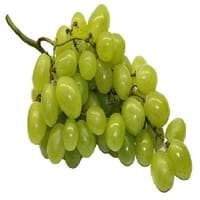Health Benefits
Cancer prevention, Kidney stone treatment, Prevents constipation, Treatment of alzheimer's disease
Cancer prevention, Cures gastro-intestinal troubles, Improves night vision, Improves stomach health, Prevents diabetes, Prevents high blood pressure, Reduces blood circulation problems
General Benefits
Digestive aid, Improves eye vision, Maintains healthy cholesterol level, Treatment of migraine
Fights against infections, Helps in weight loss, Prevents blood clotting in vessels, Treatment of urinary tract infections
Skin Benefits
Anti-aging benefits, Heals sunburn, Skin rejuvenation, Treatment of dark spots
Anti-aging benefits, Nourishes skin, Protects against skin damage
Hair Benefits
Prevents hair loss, Regulates hair growth, Treatment of dandruff
Prevents hair loss
Allergy Symptoms
Anaphylaxis, Asthma, Breathing difficulty, Coughing, Drop in blood pressure, Hives, Skin rash, Stuffy nose, Swelling of mouth, tongue or lips, Wheezing
Not Available
Side Effects
Allergic reaction, Skin rash, Might slow down the process of blood clotting
Decrease in blood sugar levels, Diarrhoea, Dizziness, Headache, Internal bleeding, Stomach pain
Best Time to Eat
As a snack in the late afternoon, Don't consume at night and before bed, Eat the fresh ones, avoid mixing with any other foods, don't eat after meal., Morning time (before lunch)
As a snack in the late afternoon, Don't consume at night and before bed, Eat the fresh ones, avoid mixing with any other foods, don't eat after meal., Morning time (before lunch)
Vitamin B5 (Pantothenic Acid)
Vitamin C (Ascorbic Acid)
Vitamin K (Phyllochinone)
Phytosterol
Not Available
Calories in Fresh Fruit with Peel
Calories in Fresh Fruit without Peel
Not Available
Not Available
Calories in Frozen Form
Not Available
Calories in Dried Form
Not Available
Calories in Canned Form
Not Available
Season
Autumn, Summer
Summer
Varieties
Cabernet Sauvignon, Merlot, Pinot Noir, Syrah/Shiraz and Zinfandel
Dwarf bilberry, Piper, bog blueberry, Northern bilberry, Mountain bilberry and Oval-leaved bilberry
Color
Green, Red
Dark purple
Inside Color
Light Green
Light Green
Origin
Western Asia, Central Europe
Unknown
Soil Type
Clay loam, Sandy loam
Moist, Well-aerated
Climatic Conditions
Warm
Cold
Facts about
- If left alone, a grapevine can spread 50 feet and even more.
- There are more than 8,000 varieties of grape worldwide.
- They are available in 7 different colors: red, green, white, black, purple, blue and golden.
- Bilberries are used in manufacturing of alcoholic drinks.
- They are used to improve aromas of sorbets.
- The green extract of it's leaves is used in textile industry as natural dye.
Other Countries
Argentina, Armenia, Australia, Chile, France, Iran, Italy, Portugal, Romania, Turkey, United States of America
Denmark, Finland, Iceland, Sweden
Top Importer
United States of America
United States of America
Botanical Name
Vitis vinifera
Vaccinium myrtillus
Synonym
Not Available
blaeberry, whinberry, European blueberry, whortleberry
Subkingdom
Tracheobionta
Tracheobionta
Division
Magnoliophyta
Magnoliophyta
Class
Magnoliopsida
Magnoliopsida
Subclass
Rosidae
Dillenhidae
Family
Vitaceae
Ericaceae
Species
Vitis vinifera
Vaccinium myrtillus
Generic Group
Grape
Heath
Difference Between Grape and Bilberry
We might think that Grape and Bilberry are similar with respect to nutritional value and health benefits. But the nutrient content of both fruits is different. Grape and Bilberry Facts such as their taste, shape, color, and size are also distinct. The difference between Grape and Bilberry is explained here.
The amount of calories in 100 gm of fresh Grape and Bilberry with peel is 69.00 kcal and 44.00 kcal and the amount of calories without peel is Not Available and Not Available respectively. Thus, Grape and Bilberry belong to Low Calorie Fruits and Low Calorie Fruits category.These fruits might or might not differ with respect to their scientific classification. The order of Grape and Bilberry is Vitales and Ericales respectively. Grape belongs to Vitaceae family and Bilberry belongs to Ericaceae family. Grape belongs to Vitis genus of Vitis vinifera species and Bilberry belongs to Vaccinium genus of Vaccinium myrtillus species. Beings plants, both fruits belong to Plantae Kingdom.









